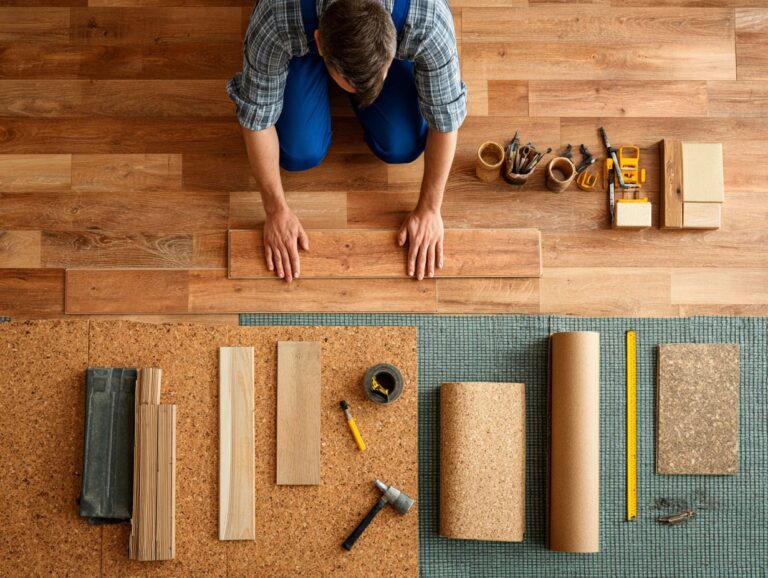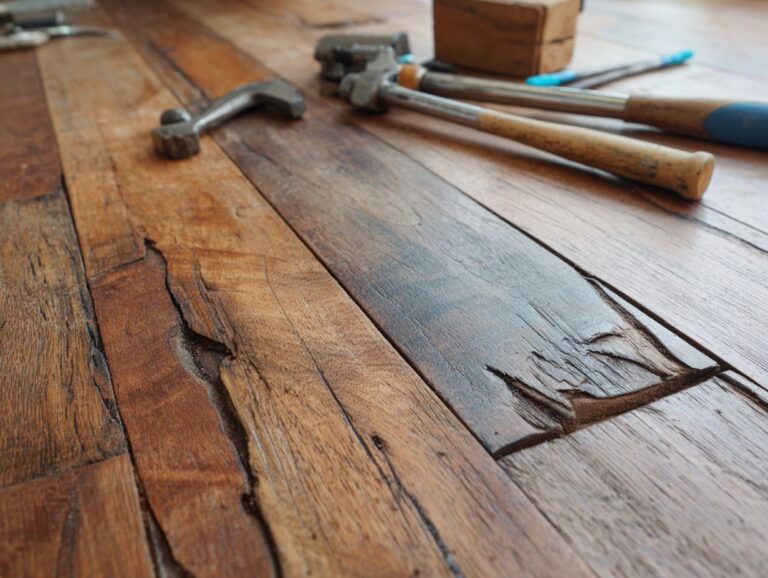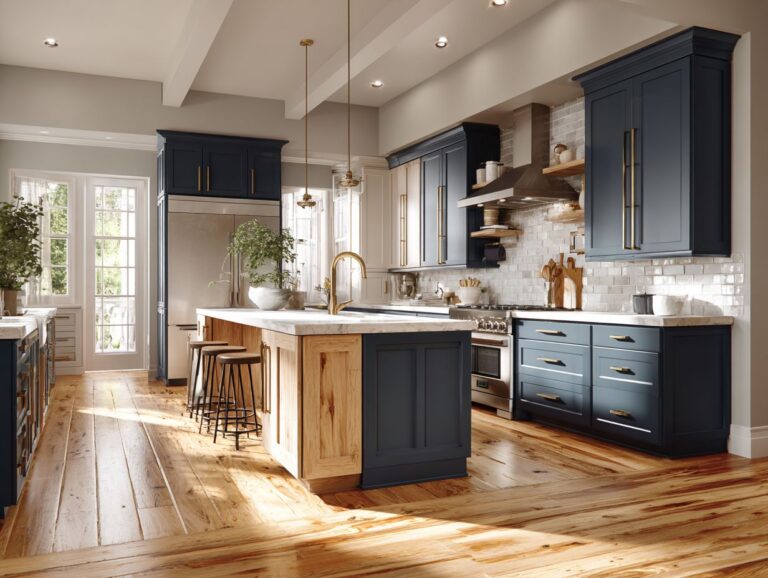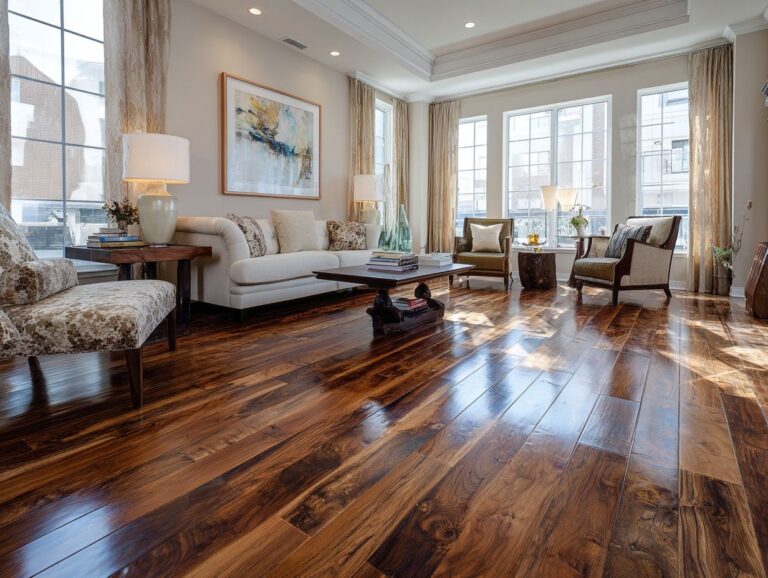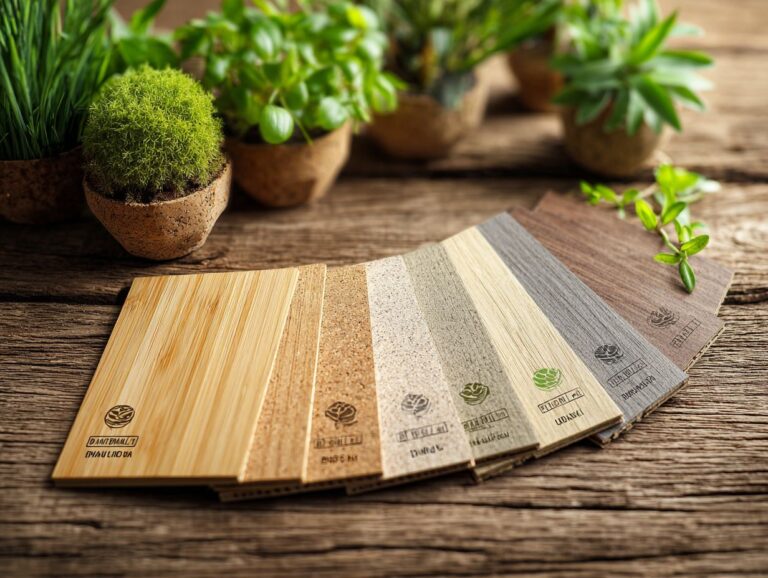Flooring Cost Per Square Foot – 2025 Pricing Guide
Planning a kitchen remodel? Knowing the cost of flooring per square foot is important for homeowners in Maryland. In 2025, high-end flooring choices such as hardwood are popular, making your choice of flooring an important part of your kitchen update plan. This guide from Cornerstone Remodeling shares up-to-date prices, helping you decide how to improve your space without overspending. Find the best flooring options that fit your budget!
Key Takeaways:
Contents
- Flooring Cost Statistics 2025
- Types of Flooring Materials
- Cost Breakdown by Material
- Factors Influencing Flooring Costs
- Average Costs Across Different Regions
- Budgeting for Flooring Projects
- Frequently Asked Questions
- What factors will affect flooring cost per square foot in 2025?
- Will the cost of flooring per square foot increase or decrease in 2025?
- What are the average flooring costs per square foot for different types of flooring?
- Are installation costs included in the flooring cost per square foot?
- How can I get an accurate estimate for flooring cost per square foot in 2025?
- Are there any ways to save on flooring costs per square foot in 2025?
Importance of Understanding Costs
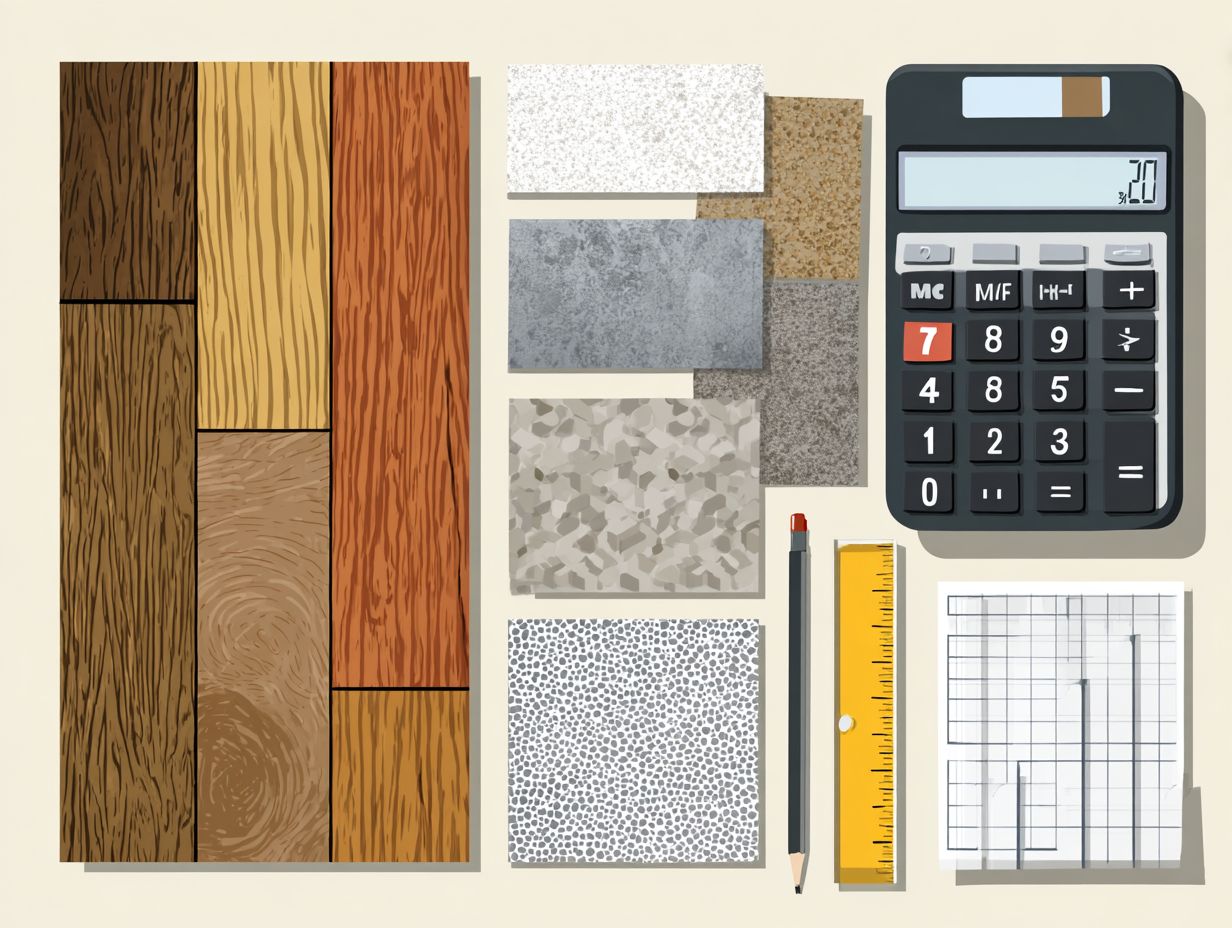
Knowing flooring costs helps homeowners make informed choices and avoid budget overruns during kitchen renovations.
Unexpected expenses can arise, such as surcharges for premium materials or hidden fees for installation. For instance, if you opt for hardwood flooring, understand that the average cost ranges from $8 to $12 per square foot, but additional charges for underlayment and disposal can quickly add up by $2 to $5 per square foot.
To mitigate these potential pitfalls, create a detailed budget that includes a cushion-typically 10-20% of your total costs-for unforeseen expenses. Look at different suppliers and collect several quotes to make sure you get the best price.
Overview of the 2025 Market Trends
As of 2025, the flooring market is projected to see significant shifts, influenced by trends toward eco-friendly materials and luxury finishes.
One notable trend is the rising popularity of luxury vinyl plank (LVP), which is expected to capture over 30% of the flooring market by 2026. Its appeal lies in its durability and aesthetic versatility, allowing homeowners to achieve high-end looks at a fraction of the cost.
Sustainable flooring options like bamboo and cork are gaining traction, with a projected market growth rate of 12% annually. Consumers increasingly prioritize materials that are both stylish and environmentally friendly, reflecting a broader shift towards responsible consumption.
Flooring Cost Statistics 2025
Flooring Cost Statistics 2025
Flooring Costs: Average Costs per Square Foot
Flooring Costs: Additional Costs
Flooring Costs: Room Specific Costs
The Flooring Cost Statistics 2025 data gives a full summary of the costs linked to various flooring materials, labor, and installation methods, plus extra charges and expenses specific to each room. This data set is a useful tool for homeowners, contractors, and businesses planning flooring projects by providing information on the costs of different flooring choices.
Average Costs per Square Foot reflect the diverse pricing across flooring materials and installation. Flooring material prices average at $25.5 per square foot, while labor costs are typically $11.0 per square foot. Installation costs vary significantly among materials, with hardwood flooring at $18.0 and engineered wood at $13.5. Laminate and vinyl flooring are more budget-friendly, with costs of $9.0 and $6.0, respectively. More premium installations like tile and terrazzo flooring are priced at $30.0 and $35.0, showing the detailed knowledge and skill needed. Epoxy flooring, often used in industrial settings, averages at $7.0.
In terms of Additional Costs, carpet installation is relatively low at $5.0 per square foot, while cork flooring installation costs $10.0. Polished concrete floors and underlayment installation are priced at $9.0 and $2.0, respectively, offering cost-effective options for specific needs.
Room-Specific Costs Give details on flooring costs for specific locations. Bathroom flooring projects average $500.0, reflecting the need for durable, water-resistant materials. Living room replacements cost around $402.0, while kitchen flooring is slightly lower at $151.5. Notably, basement flooring costs are the most economical at $9.5, likely due to simpler installation processes.
This dataset shows how important it is to budget and plan for flooring projects. It points out the different costs linked to materials, labor, and the specific requirements of each room. By looking at these statistics, people and businesses can make smart choices that align with their money and design goals.
Types of Flooring Materials
Picking the right flooring for a kitchen makeover is important for meeting design objectives and ensuring lasting worth. For an in-depth understanding of material durability, consider exploring related insights: Understanding Flooring Janka Hardness Ratings.
Hardwood Flooring
Hardwood flooring is a popular choice because of its classic look, but it’s important to know the expenses involved and how to care for it.
There are many well-known types of hardwood, each with its own characteristics and price.
- Brazilian Cherry: Known for its bright color and long-lasting quality, it usually costs $8-$10 per square foot.
- Tigerwood: Offers a striking pattern, averaging $6-$9 per square foot.
Maintenance is essential to preserve their natural beauty; regular sweeping and a damp mop with specialized wood cleaners can prevent scratches and damage.
Think about refinishing the floor every 5-10 years to restore its shine and extend its life.
Laminate Flooring
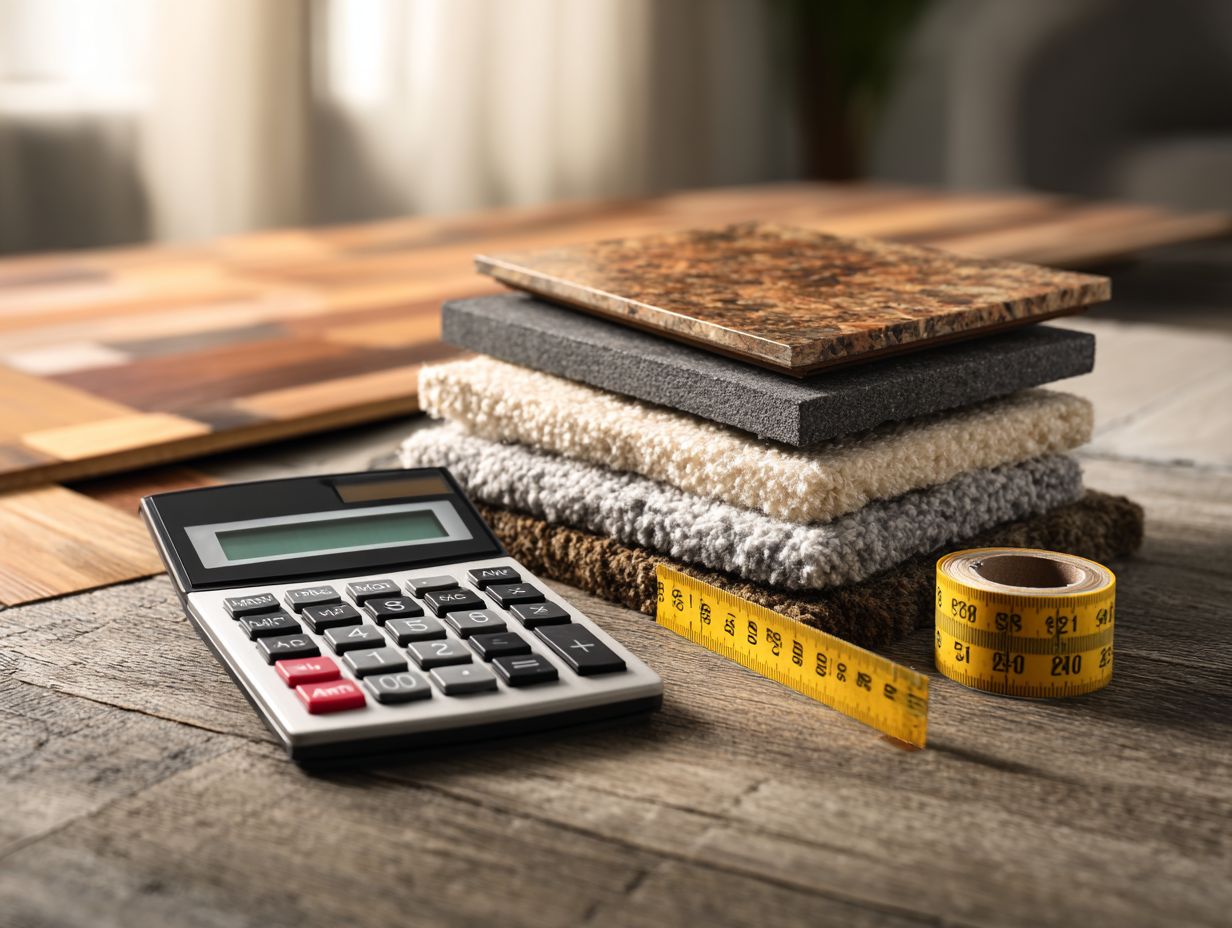
Laminate flooring provides an affordable option that looks like wood or stone without being expensive.
With prices ranging from $1 to $5 per square foot, laminate is significantly cheaper than hardwood or tile.
Its DIY-friendly installation is a major advantage; most planks feature a click-lock system, enabling homeowners to complete the project with minimal tools.
Durability is another strong point, as laminate resists scratches and stains better than many hardwood options. For example, brands like Pergo and Quick-Step offer warranties up to 25 years, making laminate a practical choice for style and long-lasting use.
Vinyl Flooring
Vinyl flooring, especially premium LVP, is ideal for kitchens due to its moisture resistance and wide range of designs.
With pricing ranging from $2 to $6 per square foot, vinyl flooring offers affordability without sacrificing style. Homeowners can choose from various options, including sleek, modern planks and classic tiles that mimic natural materials.
Setting it up is simple, usually needing just glue and a utility knife, which makes it easy for do-it-yourself tasks.
For kitchens, look for styles labeled as ‘waterproof’ for added durability against spills. Popular products like COREtec and Karndean combine aesthetics and practicality, reinforcing vinyl’s reputation as a top choice for moisture-prone areas.
Tile Flooring
Tile flooring is popular because it is durable and available in various designs, offering both aesthetic appeal and long-lasting value.
There are three main types of tile to consider for your kitchen: ceramic, porcelain, and stone.
- Ceramic tiles, costing between $3 and $7 per square foot, are easy to use and good for DIY projects.
- Porcelain tiles range from $5 to $15 per square foot. They are water-resistant and durable, making them a great choice for high-traffic areas.
- Natural stone tiles, typically starting at $7 per square foot, add elegance but require professional installation due to their weight and varying thickness.
Choosing the right tile depends on your budget and desired look.
Carpet Flooring
Though less common in kitchens, carpet flooring can provide unique benefits such as warmth and soundproofing properties.
Opting for carpet in your kitchen can offer a cozy atmosphere, especially in open-concept homes. When choosing carpet, consider low-pile options that are easier to clean and maintain.
Prices range from $2 to $10 per square foot, depending on material and quality. For maintenance, a simple vacuuming routine combined with occasional professional cleaning can keep it looking fresh.
Perfect for small kitchens or breakfast areas, where extra warmth and comfort can improve the dining experience while keeping it stylish.
Cost Breakdown by Material
Knowing the cost details of different flooring options helps homeowners plan their remodeling budgets better.
Hardwood Flooring Costs
Hardwood flooring typically ranges from $5 to $12 per square foot depending on type, with installation costs averaging an additional $4 per square foot.
The type of hardwood significantly influences the overall cost. For instance, domestic hardwoods like oak generally cost between $5 and $8 per square foot, while exotic woods like Brazilian cherry can range from $8 to $12.
Installation costs depend on the difficulty; simple installations cost about $4 per square foot, while complex designs can cost $7 or more.
Think about the regular upkeep costs-hardwood floors need refinishing every 10 years, which costs between $1.50 and $3 per square foot, affecting your budget over time.
Laminate Flooring Costs
Laminate flooring is one of the most budget-friendly options, with costs ranging from $1 to $5 per square foot plus installation fees around $2 per square foot.
The affordability of laminate flooring often comes with an impressive range of finishes. For instance, choosing a textured wood grain finish typically adds about $1 per square foot to the total cost, while opting for a high-gloss option might increase expenses by $2 per square foot.
Installing it is simple and generally requires only basic tools like a saw and a tapping block, making it a suitable project for DIY enthusiasts.
For a quick installation, consider click-lock systems, which can reduce labor costs significantly and can often be completed in a weekend.
Vinyl Flooring Costs
Vinyl flooring, including premium LVP products, can cost between $2 and $7 per square foot, with installations typically adding $1-$3 per square foot.
The cost of vinyl flooring varies significantly based on factors such as brand, design, and features. Standard vinyl tiles are usually cheaper, while luxury vinyl planks (LVP) that are stronger and look more like real wood are more expensive.
Brands such as Armstrong and Shaw have different styles and prices, so it’s important to look at various choices. Consider installation complexity; simpler designs may save on labor costs.
Therefore, account for both materials and installation when budgeting for your flooring project.
Tile Flooring Costs
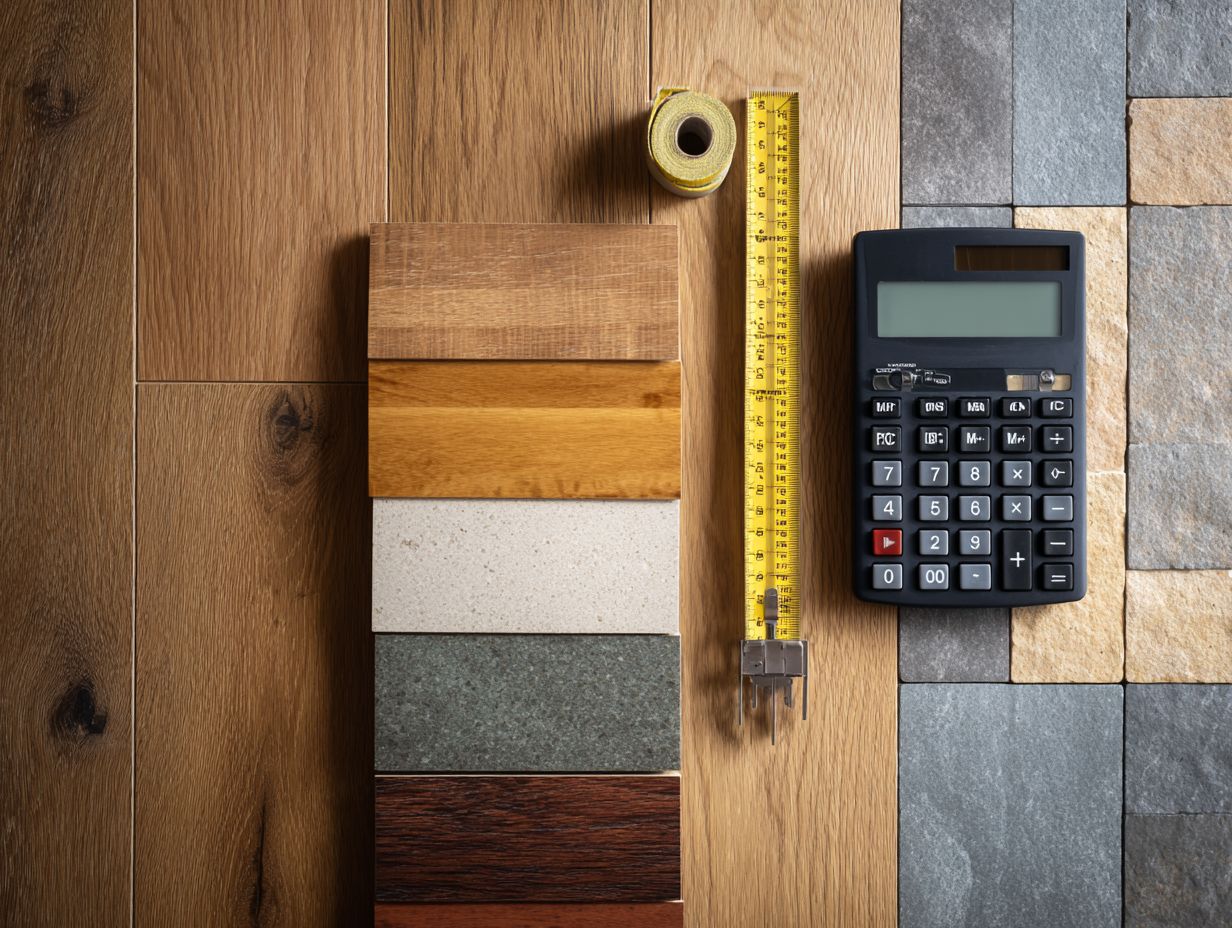
Tile flooring costs can vary significantly, with averages ranging from $3 to $15 per square foot, influenced by material type and design.
Ceramic tiles typically range in price from $3 to $7 per square foot, offering a budget-friendly option for many projects.
Porcelain tiles, which offer greater durability and water resistance, usually fall between $5 and $12 per square foot. Natural stone tiles, such as marble or granite, are the most expensive, often exceeding $10 to $15 per square foot.
Designer tiles can greatly increase overall costs, sometimes doubling prices because of their unique patterns or handmade quality. Installation fees generally add another $4 to $10 per square foot, depending on complexity.
Carpet Flooring Costs
Carpet flooring costs between $2 and $10 per square foot. Installation adds about $2 per square foot, providing a budget-friendly choice for renovations.
The total cost will vary based on the style you choose.
For instance, plush carpets can start at $3 per square foot and offer a luxurious feel, but require more frequent cleaning. In contrast, Berber carpets, often priced around $5 per square foot, are more durable and easier to maintain.
Consider adding another $1 per square foot for padding, which improves comfort and lasts longer. Assess your lifestyle needs, as higher-end options usually entail lower maintenance in the long run.
Factors Influencing Flooring Costs
Different main factors influence flooring costs, which impact the total expense of kitchen renovation projects.
Quality of Materials
The quality of flooring materials directly correlates to both installation costs and long-term value in a kitchen remodel.
Investing in high-quality materials like hardwood or porcelain tile may have a higher upfront cost-around $5 to $15 per square foot-but they provide superior durability and aesthetics.
For example, hardwood can last over 30 years with proper care, while cheaper laminate may need replacement in a decade.
Budget options such as vinyl may start around $1 to $3 per square foot, appealing for tight budgets, but consider the potential long-term expense of replacement and maintenance.
Choose materials that match your kitchen design and fit your budget for long-term happiness.
Installation Costs
Installation costs can significantly impact the overall budget, often ranging from $2 to $8 per square foot depending on material and complexity.
To accurately determine your installation costs, consider three main factors: the contractor’s charges, the type of flooring material, and the project’s complexity.
Contractor rates vary by region, typically between $30 to $100 per hour. For example, laminate flooring, with an average installation cost of $1.50 to $3 per square foot, is less complex than tile, which may cost $4 to $8 due to its labor-intensive process.
If your project involves moving furniture or requires subfloor repairs, anticipate higher costs due to the increased labor and materials needed.
Geographic Location
Where you live greatly affects flooring prices. Costs differ a lot between cities and countryside areas.
For example, in Maryland, the average cost per square foot for hardwood flooring is around $5.50, while in a less populated state like West Virginia, it can drop to about $4.00.
This price differentiation is often influenced by local demand; urban areas may have higher contractor rates due to increased clientele and overhead costs.
To manage these changes, homeowners should gather multiple quotes and consider purchasing during off-peak times when contractors may offer discounts to keep working.
Market Demand
Market demand can fluctuate, affecting both the availability and pricing of specific flooring materials.
Current trends in home renovations, such as the rising popularity of open-concept spaces and eco-friendly designs, have notably increased demand for vinyl and laminate flooring. These materials are often chosen for their durability and affordability, appealing to budget-conscious homeowners.
For example, the shift towards sustainable living has led to a surge in interest in bamboo flooring, which is both eco-friendly and stylish.
As these renovations continue to gain traction, expect prices for popular flooring types, especially premium options, to rise, reflecting the heightened demand.
Average Costs Across Different Regions
Flooring costs differ greatly depending on the area, so homeowners should check local prices before beginning renovations. To fully understand what impacts these costs, including refinishing, homeowners can refer to our Floor Refinishing Cost Factors – Complete Breakdown.
Cost Variations in Urban Areas
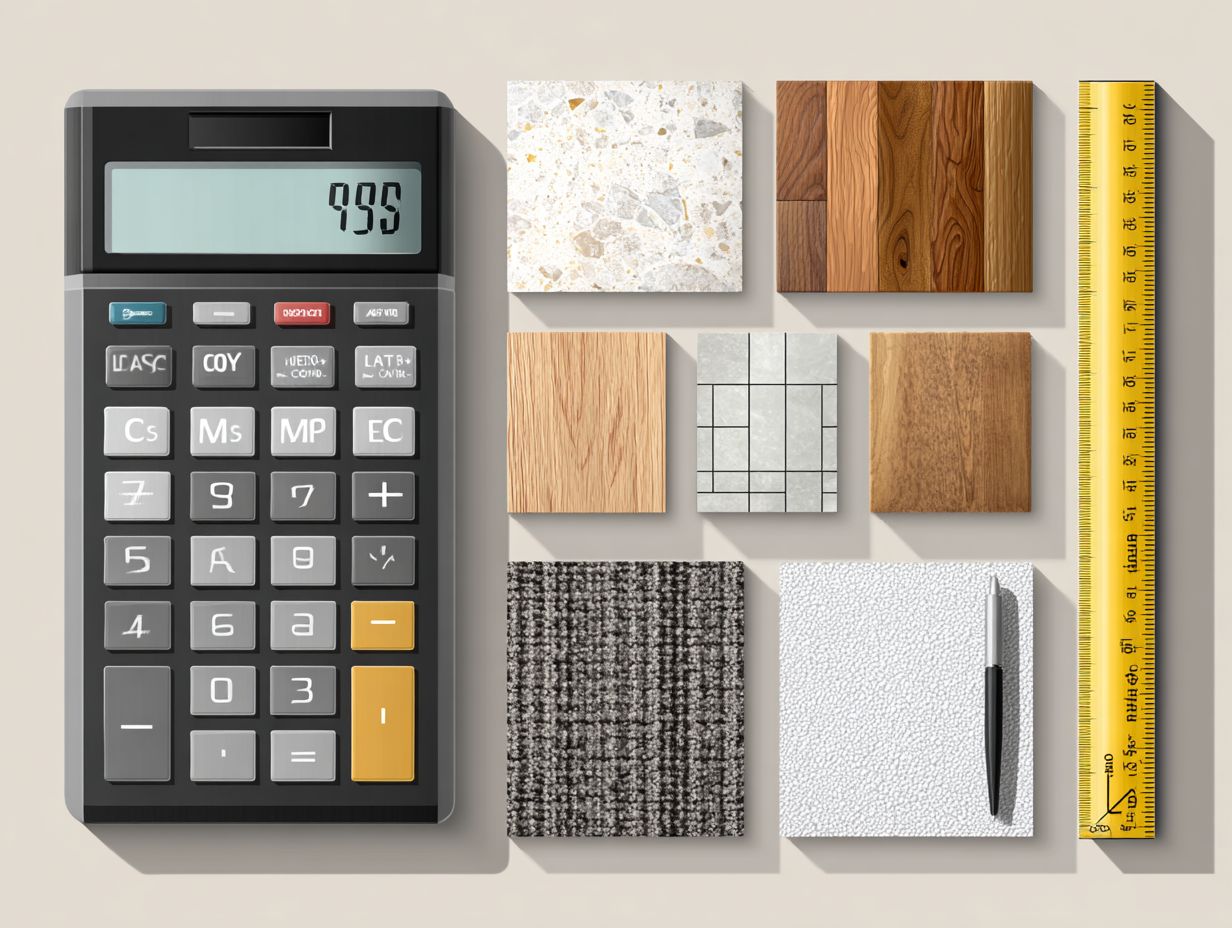
Urban areas tend to have higher flooring costs due to increased demand and overhead expenses associated with suppliers and contractors.
For example, in Baltimore, hardwood flooring may range from $7 to $12 per square foot, factoring in urban labor rates.
In contrast, smaller towns in Maryland, like Hagerstown, might see prices as low as $4 to $8 per square foot due to less competition and lower overall living costs.
The difference in prices can greatly affect renovation budgets. Homeowners in cities might need to spend more or look for loans, while those in smaller towns might have more freedom in how they use their money.
Cost Variations in Rural Areas
In rural areas, flooring costs can be lower due to reduced demand, but availability of specific materials may be limited.
For instance, while hardwood may be priced around $3-$5 per square foot in urban settings, it can drop to $2-$4 in rural areas.
Options like luxury vinyl, priced approximately $2-$3 per square foot, may become prevalent due to easier transportation. Homeowners should also consider locally-sourced materials such as reclaimed wood, often available cheaper at local mills.
To reduce expenses, consider using plywood subflooring, which costs about $1 per square foot, to maintain both affordability and quality.
Budgeting for Flooring Projects
Managing a flooring budget well begins with knowing all the costs involved, including materials and installation. For larger spaces, it’s crucial to consider unique solutions that optimize both cost and design. Great room flooring ideas can offer valuable insights into how to efficiently manage these aspects.
Estimating Total Costs
Estimating total costs involves calculating material expenses, installation fees, and possible contingencies for unforeseen expenses.
Start by determining the square footage of your flooring area. Multiply this by the cost per square foot of your chosen material; for instance, if your space is 400 square feet and you select hardwood at $5 per square foot, the material cost would be $2,000.
Next, add installation fees-typically ranging from $1 to $3 per square foot-adjusting based on complexity. Allocate an additional 10-15% for contingencies, such as unexpected repairs or additional materials.
This method guarantees a balanced flooring budget.
Frequently Asked Questions
What factors will affect flooring cost per square foot in 2025?
The cost of flooring in 2025 will be influenced by factors such as material prices, labor costs, and demand for certain types of flooring.
Will the cost of flooring per square foot increase or decrease in 2025?
It is difficult to predict the exact cost of flooring per square foot in 2025, but it is expected to increase due to inflation and market trends.
What are the average flooring costs per square foot for different types of flooring?
On average, hardwood flooring can cost between $8-$25 per square foot, while vinyl flooring can range from $2-$7 per square foot. Ceramic tile can cost between $5-$10 per square foot, and carpet can range from $3-$11 per square foot.
Are installation costs included in the flooring cost per square foot?
In most cases, installation costs are not included in the flooring cost per square foot and will need to be factored in separately. Installation costs can vary depending on the type of flooring and the complexity of the installation.
How can I get an accurate estimate for flooring cost per square foot in 2025?
To find out the cost of flooring per square foot in 2025, talk to a flooring contractor. They can provide a detailed quote based on your specific flooring needs and the current market prices.
Are there any ways to save on flooring costs per square foot in 2025?
One way to potentially save on flooring costs per square foot in 2025 is to consider using alternative materials, such as laminate or luxury vinyl, which can be more affordable while still providing a similar look and durability to traditional flooring options.
